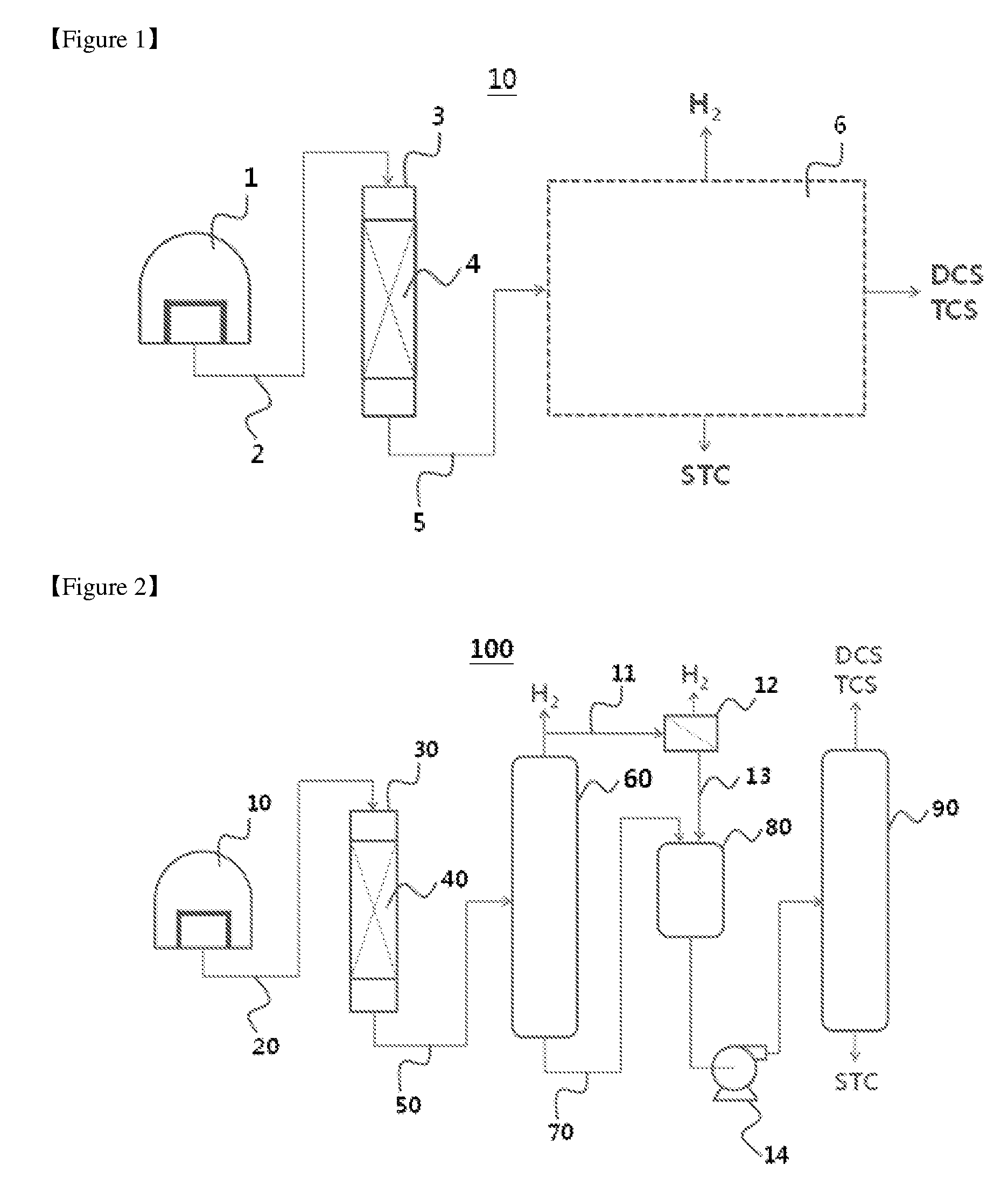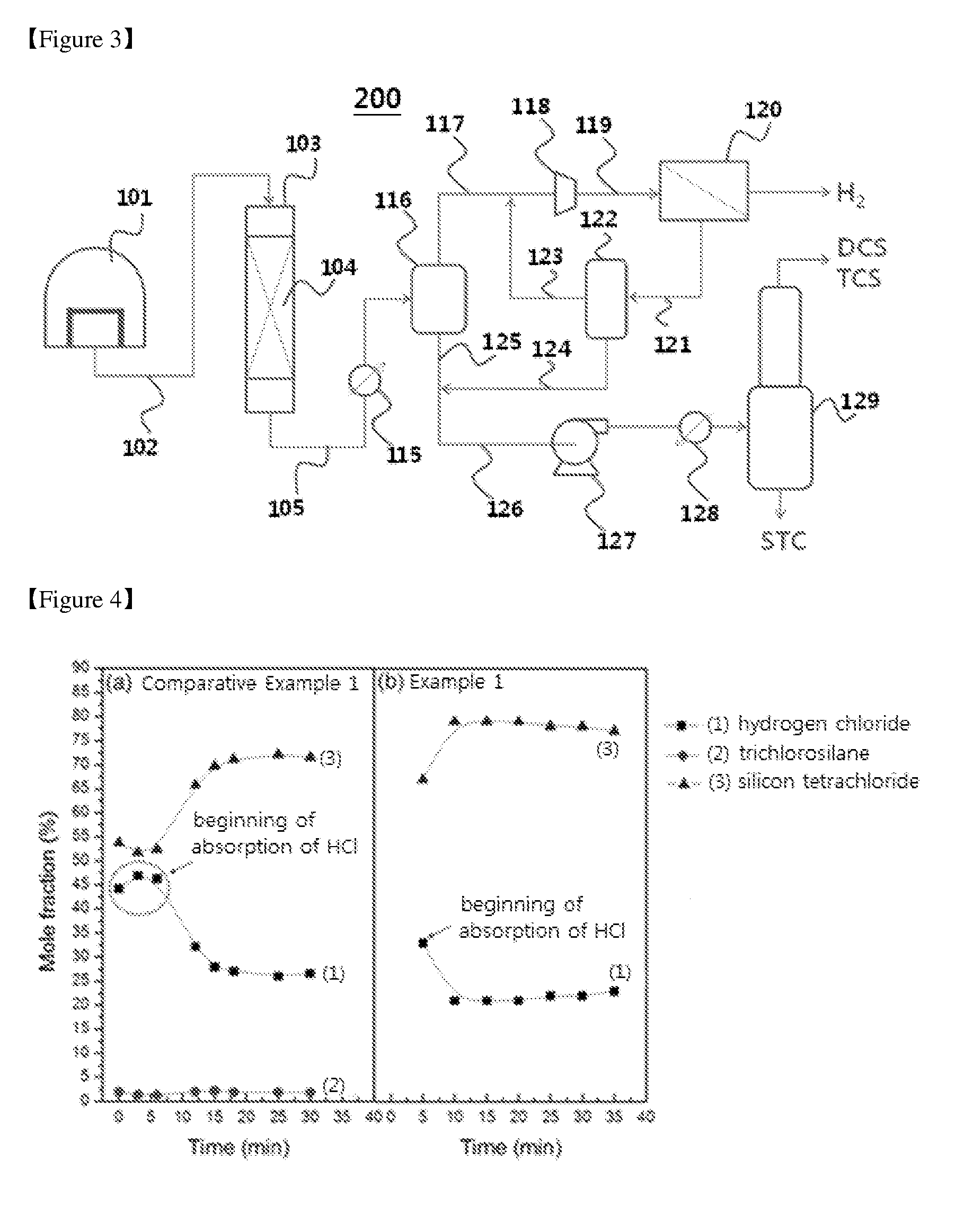Method for purification of off-gas and device for the same
a technology of purification method and purification device, which is applied in the direction of physical/chemical process catalyst, metal/metal-oxide/metal-hydroxide catalyst, separation process, etc., can solve the problems of high maintenance cost, low energy efficiency, and complex process, and achieve simple and low energy device, elution of impurities in activated carbon, and high purity
- Summary
- Abstract
- Description
- Claims
- Application Information
AI Technical Summary
Benefits of technology
Problems solved by technology
Method used
Image
Examples
experimental example
Evaluation of the Performance of a Catalytic Reactor by Reaction Simulation
experimental example 1
[0093]Off-gas was purified using the purification device shown in FIG. 1. In order to confirm the performance, the process was simulated using a process simulation program ASPEN Plus.
[0094]The reaction temperature and the pressure of the catalytic reactor 3 were set at 170° C. and 5 barG, and the composition of the stream introduced in the catalytic reactor 3 was set to consist of 1 mol % of hydrogen chloride, 2 mol % of dichlorosilane, 10 mol % of trichlorosilane, 7 mol % of silicon tetrachloride, and 80 mol % of hydrogen. As the catalytic reactor 3, R-Gibbs and R-Stoic models were used.
[0095]As the result of simulation under the above conditions, the mixed gas 5 that has passed through the catalytic reactor 3 consisted of 1 mol % of dichlorosilane, 12 mol % of trichlorosilane, 7 mol % of silicon tetrachloride, and 80 mol % of hydrogen, and it was confirmed that hydrogen chloride reacts with dichlorosilane under the given reaction conditions and is removed, and is converted into hi...
experimental example 2
[0096]Off-gas was purified using the purification device shown in FIG. 2. In order to confirm the performance, the process was simulated using a process simulation program ASPEN Plus.
[0097]The reaction temperature and the pressure of the catalytic reactor 30 were set at 170° C. and 5 barG, and the composition of the stream introduced in the catalytic reactor 30 was set to consist of 1 mol % of hydrogen chloride, 2 mol % of dichlorosilane, 10 mol % of trichlorosilane, 7 mol % of silicon tetrachloride, and 80 mol % of hydrogen. As the catalytic reactor 30 was R-Gibbs and R-Stoic models were used.
[0098]The purification temperature in the primary distillation column 60 was set at −5˜−60° C., and the pressure was set at 23 barG. It was set that the composition of the mixed gas 50 stream introduced in the primary distillation column 60 was identical to the composition obtained as the simulation result for the catalytic reactor 30, which consisted of 1 mol % of dichlorosilane, 12 mole % of...
PUM
| Property | Measurement | Unit |
|---|---|---|
| temperature | aaaaa | aaaaa |
| boiling point | aaaaa | aaaaa |
| temperature | aaaaa | aaaaa |
Abstract
Description
Claims
Application Information
 Login to View More
Login to View More - R&D
- Intellectual Property
- Life Sciences
- Materials
- Tech Scout
- Unparalleled Data Quality
- Higher Quality Content
- 60% Fewer Hallucinations
Browse by: Latest US Patents, China's latest patents, Technical Efficacy Thesaurus, Application Domain, Technology Topic, Popular Technical Reports.
© 2025 PatSnap. All rights reserved.Legal|Privacy policy|Modern Slavery Act Transparency Statement|Sitemap|About US| Contact US: help@patsnap.com



